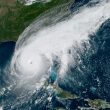Tap water quality, equity in utility access highlighted by industry report
A few years ago, the public health crisis in Flint, Mich. thrust the importance of safe tap water into the national spotlight. Beyond discussions about the emergent needs of Flint residents at the time, the crisis opened up a broader dialogue about equity in utility access, especially within communities of color.
Inequalities continue to persist today, based on the findings of a survey commissioned by the American Water Works Association, “Public Perceptions of Tap Water,” which was carried out by Morning Consult. The report surveyed more than 1,975 Americans on questions about water quality and water clarity, financial impact and trust, among other things.
While about 70 percent ranked their water quality as excellent or good, one quarter of Black respondents and 28 percent of Hispanic people surveyed said they felt their tap water was unsafe.
Compared to a survey conducted last year, even if supply has improved marginally, “Fewer Black adults rated their water as ‘safe’ (6% decline) and more rated their water ‘unsafe’ (7% increase). … At the same time, Black adults (26%) and Hispanic adults (22%) were more likely than white adults (16%) to report that the safety of their water supply has improved over the past five years,” reads a statement from the water association about the findings.
Overall, most respondents reported confidence in their tap water and utility services—three-fourths of adults (77%) hold a lot or some trust in their water utility, according to the survey. At the same time, the industry has “work to do to gain and maintain trust in tap water, especially in communities where historical inequities have existed,” said David LaFrance, CEO of the American Water Works Association in a statement. Four-in-ten adults described the water they drink from their faucet as clear (43%), clean (40%) and convenient (38%).
Besides ensuring there’s equity in optimal water quality, as inflation continues to increase, economically, “focusing on disadvantaged communities is even more important,” LaFrance continued. Based on survey results, minorities were again the most likely to report financial difficulties and inability to afford their utility bills: “More than half of Black adults (57%) and Hispanic adults (53%) struggle to pay their utility bills on time, while only four-in-ten white adults (40%) struggle to pay their bills,” reads the report. Overall, a third of American adults reported struggling to make their payments on time.
It’s a trend that’s on the rise. Since the last survey in June 2021, 8 percent more people said they’re now facing financial challenges. And as inflation continues to squeeze wallets, many want continued assistance from the federal government.
“Three-fourths of adults strongly or somewhat support continuing Congressional assistance to help with paying water bills for those who may not be able to afford it. Adults across key demographics show support for this policy with the most support expressed by Black adults,” the report says.




















